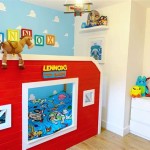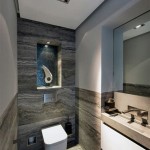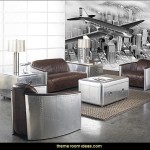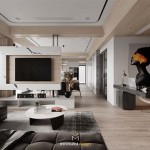How To Decorate With Antiques In A Modern Style
The juxtaposition of antique pieces with modern design elements creates a sophisticated and intriguing aesthetic. Successfully integrating antiques into a modern setting requires careful consideration of proportion, color, texture, and the historical context of the antique. The goal is to highlight the unique character of the antique while maintaining the clean lines and uncluttered feel characteristic of modern design.
Modern design emphasizes simplicity, functionality, and a focus on natural materials. Antiques, on the other hand, often possess ornate details, rich patinas, and a history that can add depth and character to a space. The challenge lies in striking a balance between these seemingly contrasting styles, creating a cohesive and harmonious environment. This balance can be achieved by carefully selecting antiques that complement, rather than compete with, the modern aesthetic.
Before embarking on a decorating project, it's essential to define the overall style and identify the specific modern elements that will serve as the foundation. This provides a framework for selecting and integrating antiques, ensuring they contribute to the desired aesthetic rather than detracting from it. Consider the color palette, architectural features, and existing furniture pieces when making decisions about antique placement and style.
Choosing the Right Antiques
Not all antiques are created equal, and selecting the right pieces is crucial for achieving a successful modern-meets-antique aesthetic. Consider the following factors when choosing antiques for a modern space:
Scale and Proportion: The size and scale of an antique should be appropriate for the space it occupies. Avoid oversized antiques that overwhelm a small room or undersized pieces that get lost in a large space. Consider the ceiling height, the dimensions of the walls, and the size of existing furniture when selecting antiques. A large, imposing antique cabinet might be better suited for a spacious entryway or living room, while a smaller antique side table could work well in a bedroom or study.
Style and Era: While a wide range of antique styles can work in a modern setting, it's important to choose pieces that complement the overall aesthetic. Mid-century modern antiques, for instance, often feature clean lines and minimalist designs that blend seamlessly with contemporary furniture. Art Deco pieces can add a touch of glamour and sophistication to a modern space, while simpler, rustic antiques can introduce warmth and texture. Avoid overly ornate or fussy antiques that clash with the clean lines of modern design.
Material and Texture: The materials and textures of antique pieces should complement the existing materials in the modern space. For example, a wooden antique chest can add warmth and character to a room with concrete floors and steel accents. A gilded antique mirror can provide a striking contrast to a minimalist white wall. Consider the interplay of different textures, such as the smooth surface of a modern coffee table against the rough texture of an antique tapestry.
Condition and Restoration: Antiques can come in varying states of repair. While some prefer the character and patina of unrestored pieces, others prefer antiques that have been professionally restored. Consider the condition of the antique and how it fits with the overall aesthetic of the space. A well-restored antique can seamlessly blend with modern furnishings, while a weathered antique can add a touch of rustic charm. Choose pieces that align with your personal preferences and the desired level of formality.
Strategic Placement and Integration
Once you have selected the appropriate antiques, the next step is to strategically place and integrate them into the modern space. Proper placement is key to creating a balanced and harmonious aesthetic.
Focal Points: Use an antique as a focal point in a room to draw the eye and create a sense of visual interest. This could be a striking antique painting above a modern sofa, an antique chandelier hanging in a minimalist dining room, or an antique armchair placed in a corner as a reading nook. The focal point should be the most visually compelling element in the room, drawing attention without overwhelming the surrounding space.
Mixing Old and New: The key to successfully integrating antiques into a modern space is to mix them with contemporary pieces. Pair an antique dresser with a modern bed frame, or place an antique rug beneath a modern coffee table. This juxtaposition of old and new creates a dynamic and visually appealing contrast. Avoid placing too many antiques together, as this can create a cluttered and dated look.
Creating vignettes: Group antiques together to create small vignettes that tell a story. Display antique porcelain on a modern shelving unit, or arrange antique books on a contemporary side table. These vignettes add personality and character to a space and provide a glimpse into the history of the antique pieces. Ensure the vignettes are well-balanced and visually appealing, avoiding clutter or overcrowding.
Using Antiques as Accents: Antiques can also be used as subtle accents to enhance the overall aesthetic of a modern space. Place a small antique vase on a mantelpiece, hang an antique mirror in a hallway, or use antique door hardware to add a touch of character to a modern home. These small details can make a big difference in the overall feel of the space, adding warmth and personality without overwhelming the clean lines of the modern design.
Color, Texture, and Lighting
Color, texture, and lighting are essential elements in any decorating project, and they play a crucial role in successfully integrating antiques into a modern space.
Color Palette: Choose a color palette that complements both the modern and antique elements in the room. Neutral colors, such as white, gray, and beige, provide a clean and versatile backdrop for showcasing antiques. Pops of color can be added through accessories, artwork, or upholstery. Consider the colors of the antiques themselves when selecting a color palette, ensuring they harmonize with the overall scheme. Avoid using too many colors, as this can create a cluttered and overwhelming look.
Texture: Texture is essential for adding depth and interest to a modern space. Incorporate a variety of textures, such as smooth, rough, and glossy, to create a visually appealing environment. Antique wood furniture can add warmth and texture to a room with concrete floors and steel accents. A soft antique rug can add comfort and luxury to a minimalist living room. Pay attention to the tactile qualities of both the antiques and the modern furnishings, ensuring they complement each other.
Lighting: Proper lighting is crucial for showcasing antiques and creating the desired mood in a space. Use a combination of natural and artificial light to illuminate the room. Position antiques in areas where they will receive ample natural light, highlighting their unique features and details. Use accent lighting to showcase specific antique pieces, such as a spotlight on an antique painting or a table lamp on an antique side table. Avoid harsh, direct lighting, as this can flatten the appearance of antiques and create an uncomfortable glare. Opt for warm, diffused lighting that enhances the warmth and character of the antique elements.
Integrating antiques into a modern style is about carefully curating a collection of pieces that complement the setting. Consider the historical context, scale, and material of each item, and arrange them thoughtfully alongside your modern furnishings to achieve a well-balanced and visually engaging interior.

How To Decorate With Antiques In A Modern Style Home The Interiors Addict

How To Decorate With Antiques In A Modern Style Home The Interiors Addict

Mixing Antiques With Modern Decor The Honeycomb Home

Mixing Antiques With Modern Decor The Honeycomb Home

How To Decorate With Antiques And Vintage Pieces

Mixing Antiques With Modern Decor The Honeycomb Home

House Home How To Make Antiques Modern

How To Mix Antiques With Modern Decor Allie Crowe

How To Make Antiques Look Modern The Perennial Style Dallas Fashion Blogger

How To Mix Antique And Modern Furniture Louisville Mercantile
Related Posts







